TGFbeta family members are key mediators in the induction of myofibroblast phenotype of human adipose tissue progenitor cells by macrophages
- PMID: 22355352
- PMCID: PMC3280291
- DOI: 10.1371/journal.pone.0031274
TGFbeta family members are key mediators in the induction of myofibroblast phenotype of human adipose tissue progenitor cells by macrophages
Abstract
Objective: The present study was undertaken to characterize the remodeling phenotype of human adipose tissue (AT) macrophages (ATM) and to analyze their paracrine effects on AT progenitor cells.
Research design and methods: The phenotype of ATM, immunoselected from subcutaneous (Sc) AT originating from subjects with wide range of body mass index and from paired biopsies of Sc and omental (Om) AT from obese subjects, was studied by gene expression analysis in the native and activated states. The paracrine effects of ScATM on the phenotype of human ScAT progenitor cells (CD34(+)CD31(-)) were investigated.
Results: Two main ATM phenotypes were distinguished based on gene expression profiles. For ScAT-derived ATM, obesity and adipocyte-derived factors favored a pro-fibrotic/remodeling phenotype whereas the OmAT location and hypoxic culture conditions favored a pro-angiogenic phenotype. Treatment of native human ScAT progenitor cells with ScATM-conditioned media induced the appearance of myofibroblast-like cells as shown by expression of both α-SMA and the transcription factor SNAIL, an effect mimicked by TGFβ1 and activinA. Immunohistochemical analyses showed the presence of double positive α-SMA and CD34 cells in the stroma of human ScAT. Moreover, the mRNA levels of SNAIL and SLUG in ScAT progenitor cells were higher in obese compared with lean subjects.
Conclusions: Human ATM exhibit distinct pro-angiogenic and matrix remodeling/fibrotic phenotypes according to the adiposity and the location of AT, that may be related to AT microenvironment including hypoxia and adipokines. Moreover, human ScAT progenitor cells have been identified as target cells for ScATM-derived TGFβ and as a potential source of fibrosis through their induction of myofibroblast-like cells.
Conflict of interest statement
Figures
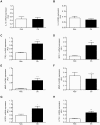

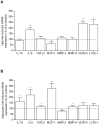
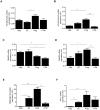

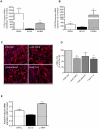
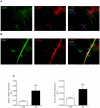
Similar articles
-
Evidence of in situ proliferation of adult adipose tissue-derived progenitor cells: influence of fat mass microenvironment and growth.J Clin Endocrinol Metab. 2008 Oct;93(10):4098-106. doi: 10.1210/jc.2008-0044. Epub 2008 Aug 5. J Clin Endocrinol Metab. 2008. PMID: 18682517
-
Hypoxia-induced epigenetic modifications are associated with cardiac tissue fibrosis and the development of a myofibroblast-like phenotype.Hum Mol Genet. 2014 Apr 15;23(8):2176-88. doi: 10.1093/hmg/ddt614. Epub 2013 Dec 2. Hum Mol Genet. 2014. PMID: 24301681
-
ChREBP expression in the liver, adipose tissue and differentiated preadipocytes in human obesity.Biochim Biophys Acta. 2011 Dec;1811(12):1194-200. doi: 10.1016/j.bbalip.2011.07.016. Epub 2011 Jul 30. Biochim Biophys Acta. 2011. PMID: 21840420
-
Release of inflammatory mediators by human adipose tissue is enhanced in obesity and primarily by the nonfat cells: a review.Mediators Inflamm. 2010;2010:513948. doi: 10.1155/2010/513948. Epub 2010 May 23. Mediators Inflamm. 2010. PMID: 20508843 Free PMC article. Review.
-
Subcutaneous and visceral adipose tissue: structural and functional differences.Obes Rev. 2010 Jan;11(1):11-8. doi: 10.1111/j.1467-789X.2009.00623.x. Epub 2009 Jul 28. Obes Rev. 2010. PMID: 19656312 Review.
Cited by
-
The Fat of the Matter: Obesity and Visceral Adiposity in Treated HIV Infection.Curr HIV/AIDS Rep. 2017 Dec;14(6):211-219. doi: 10.1007/s11904-017-0368-6. Curr HIV/AIDS Rep. 2017. PMID: 29043609 Free PMC article. Review.
-
Increased Fibro-Adipogenic Progenitors and Intramyocellular Lipid Accumulation in Obesity-Related Skeletal Muscle Dysfunction.Diabetes. 2019 Jan;68(1):18-20. doi: 10.2337/dbi18-0047. Diabetes. 2019. PMID: 30573676 Free PMC article. No abstract available.
-
Transforming growth factor beta 1 (TGFβ1) plasmatic levels and haplotype structures in obesity: a role for TGFβ1 in steatosis development.Mol Biol Rep. 2021 Sep;48(9):6401-6411. doi: 10.1007/s11033-021-06640-2. Epub 2021 Aug 17. Mol Biol Rep. 2021. PMID: 34403036
-
Adipose tissue plasticity from WAT to BAT and in between.Biochim Biophys Acta. 2014 Mar;1842(3):358-69. doi: 10.1016/j.bbadis.2013.05.011. Epub 2013 May 17. Biochim Biophys Acta. 2014. PMID: 23688783 Free PMC article. Review.
-
Lobular architecture of human adipose tissue defines the niche and fate of progenitor cells.Nat Commun. 2019 Jun 11;10(1):2549. doi: 10.1038/s41467-019-09992-3. Nat Commun. 2019. PMID: 31186409 Free PMC article.
References
-
- Curat CA, Miranville A, Sengenes C, Diehl M, Tonus C, et al. From blood monocytes to adipose tissue-resident macrophages: induction of diapedesis by human mature adipocytes. Diabetes. 2004;53:1285–1292. - PubMed
-
- Cancello R, Tordjman J, Poitou C, Guilhem G, Bouillot JL, et al. Increased infiltration of macrophages in omental adipose tissue is associated with marked hepatic lesions in morbid human obesity. Diabetes. 2006;55:1554–1561. - PubMed
Publication types
MeSH terms
Substances
LinkOut - more resources
Full Text Sources
Other Literature Sources
Medical
Research Materials
Miscellaneous

